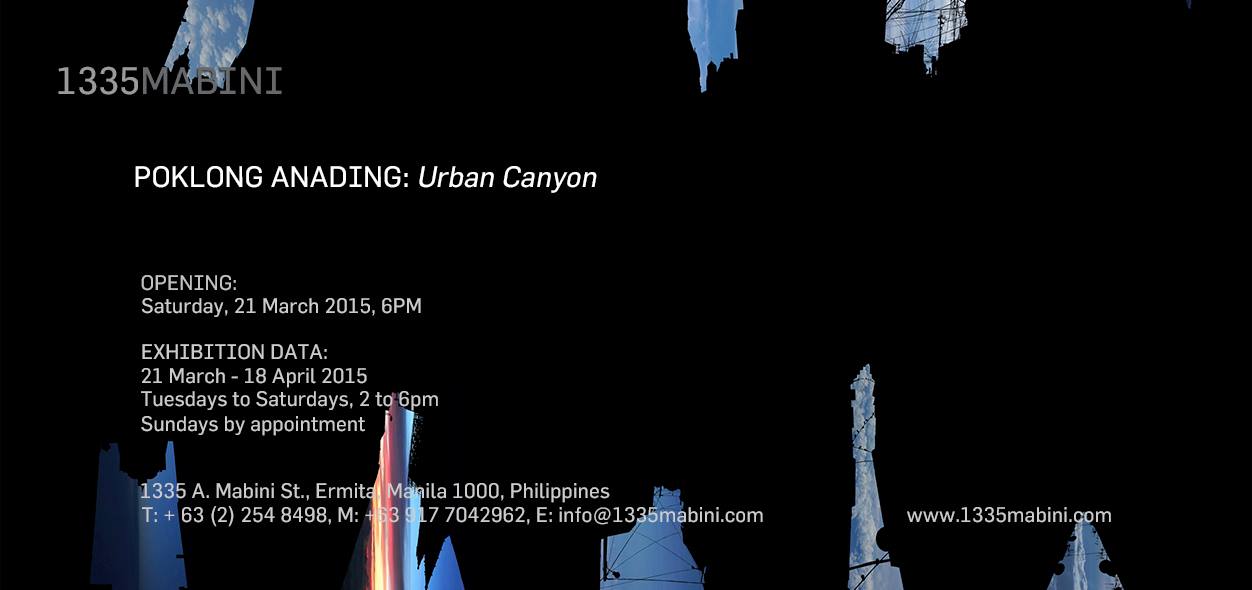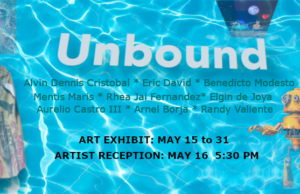
Saturday, March 21
at 6:00pm
1335Mabini
1335 A. Mabini St., Ermita, Manila, 1000, Philippines, 1000 Manila, Philippines
1335Mabini Exhibitions Opening: POKLONG ANADING, MM YU, ISSAY RODRIGUEZ, INDY PAREDES
1335MABINI presents four exhibitions this Saturday, March 21.
POKLONG ANADING: Urban Canyon
MM YU: in-transit
ISSAY RODRIGUEZ: She Dug A Well so Well
INDY PAREDES: Intravasion, Intervasion, Invasion
Opening Reception:
Saturday, March 21, 6:00pm
Exhibitions run until 18 April 2015.
Poklong Anading in a solo exhibition entitled “Urban Canyon“
Poklong Anading’s Urban Canyon is a succinct compilation of related projects that draw our attention to the marginal structures of the city. The city—not necessarily built but conceived—is in reality the construction of hidden edifices that contain its true meaning. Our sense of city, which for Poklong Anading is nothing but a complete re-fabrication of its “inner workings,” rely heavily on structures that evoke certain metropolitan and cosmopolitan ideals that only cast out its many ironies and—as a case for argument—conceal the many sources that define its real character.
Four series of projects are exhibited in the show, namely, Road to Mountains, Untitled (Drawer), Homage to Homage, and Gateway. These works present different strategies for unveiling the urbanscape’s lost components through photography, collage, video, sculpture, and through the very use of the gallery space as a discursive platform in re-situating an object from its city-function. These lost components are the “repressed” concepts of the city: buried, forgotten, or annihilated from the panorama to make way for our new sense of the city. One could also argue, that these objects constitute the base while the superstructure lies in the forces that relish their disappearances in a consumerist/corporate world.
– excerpt from exhibition notes written by Cocoy Lumbao
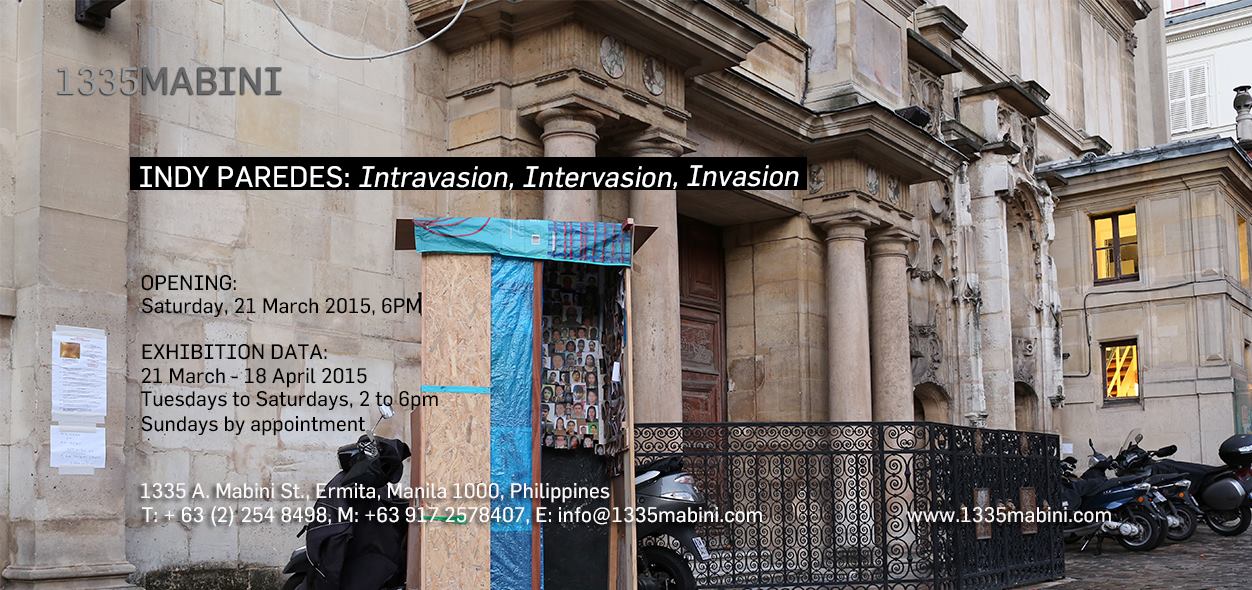
The first solo exhibition of Indy Paredes entitled “Intravasion, Intervasion, Invasion“
Can walls/ enclosures delineate the private from the public? Does a space become private because of ownership or familiarity? Is it possible for a public space to become personal and familiar?
Invasion, Intervasion, Intravasion plays on notions of personal/ private/ public space— on our movement/ negotiation between and within spaces, and the characteristic alienation brought about by unfamiliarity and separation. Rooted in the artist’s experiences in Paris, the work was borne from the impulse to carve out a private and familiar space in a foreign land, an invasion of the public and the unfamiliar in order, perhaps, to keep anxiety and alienation at bay.
The title, however, conveys the estrangement beyond property and place, and implies the artist’s concern with the psychosocial roots and effects of alienation. After all, one’s compulsion to establish a personal, private area— a home, so to speak—points to a defensive, survival instinct from both the dangers of the external environment and from unfamiliar people, as well. In(ter)vasion points to a sense of alienation from other individuals, revealing a deep-seated need for personal autonomy through the delineation of space. However, it is a false sense of autonomy. For the last word, In(tra)vasion, suggests alienation from within— from one’s work or practice, and from one’s self.
Disconnected from one’s environment, neighbor, and self, alienation permeates completely from the external to the internal.
– exceprt from exhibition notes by JC Rosette
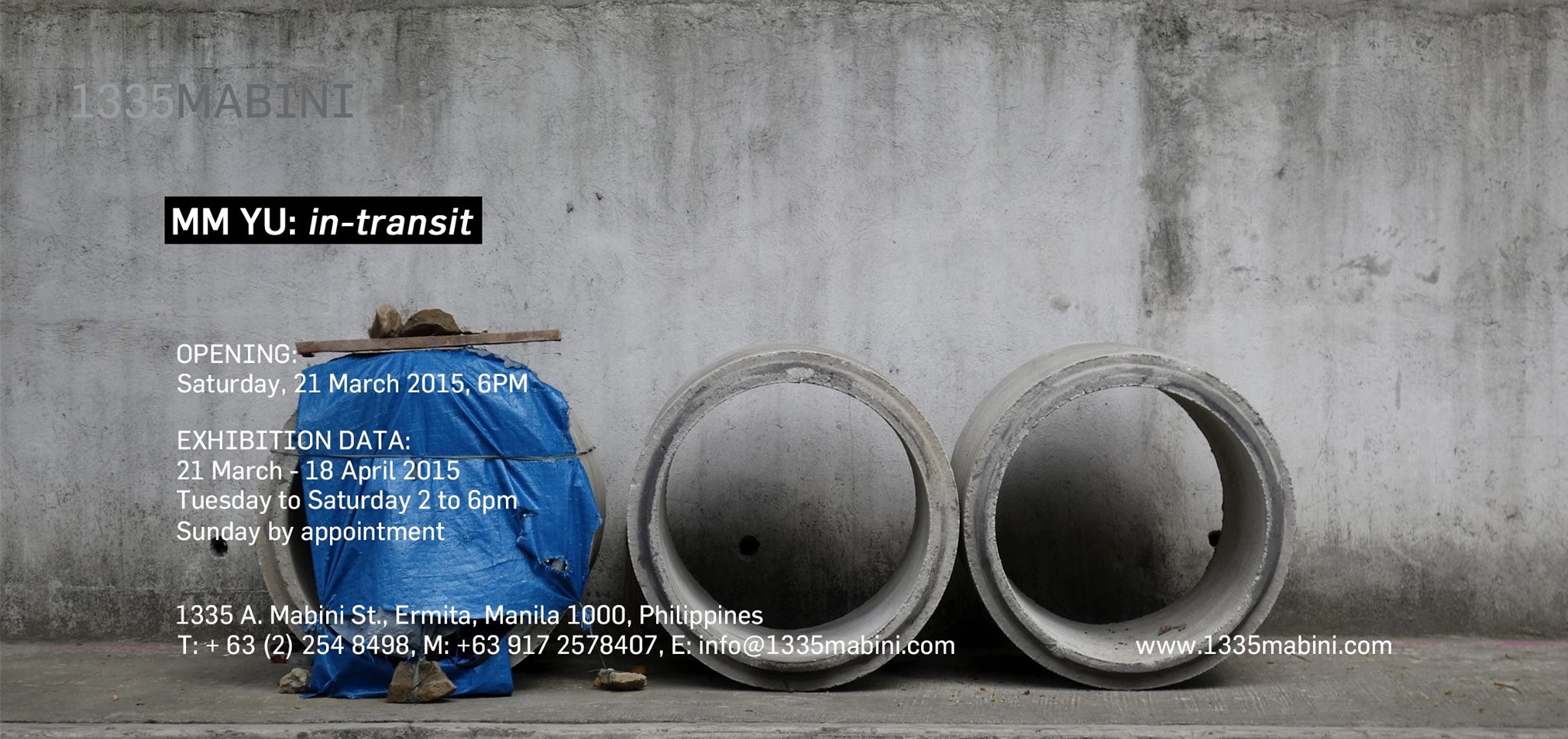
MM Yu: in-transit
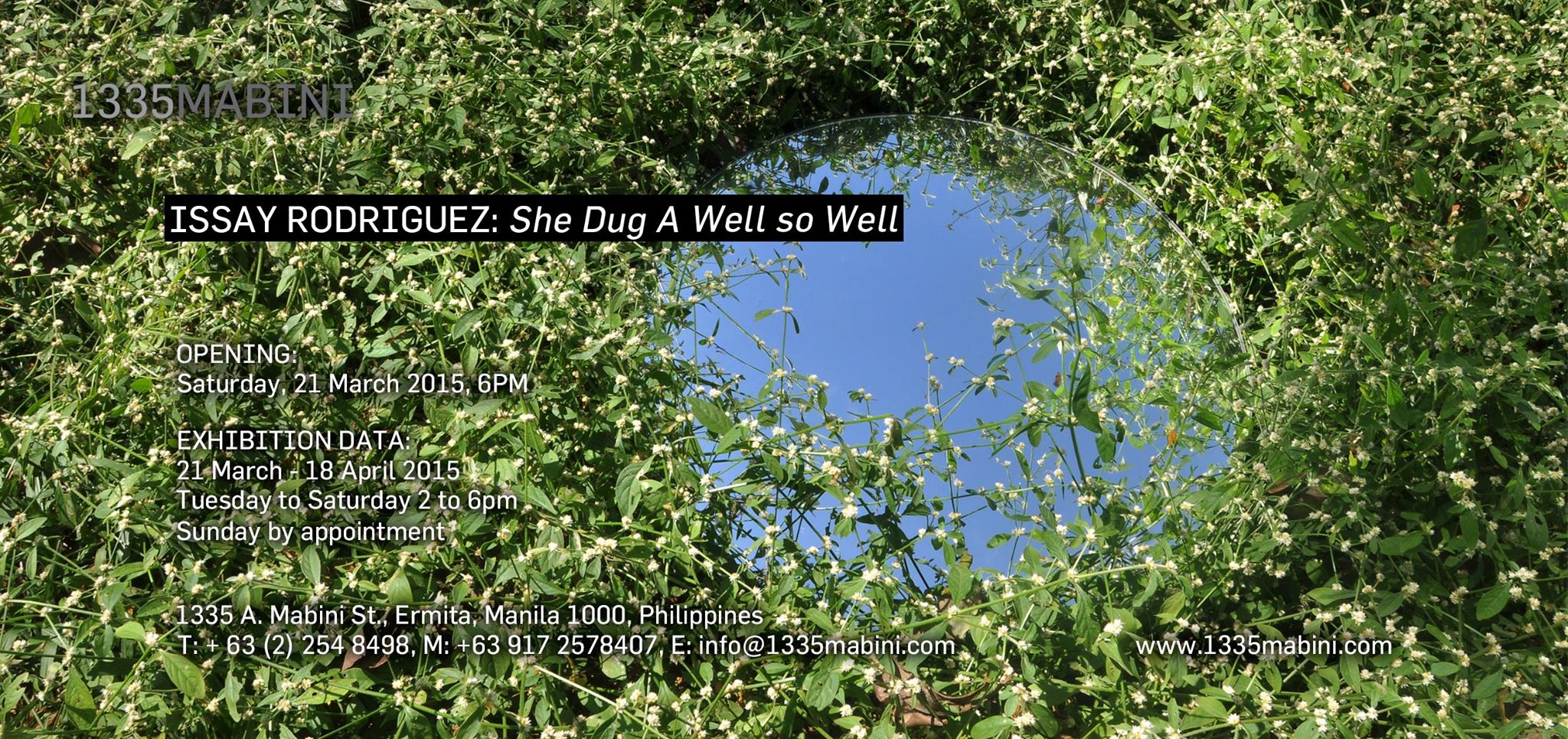
Issay Rodriguez in a solo exhibition entitled “She Dug A Well so Well“
It may as well be that the most complex of thoughts can be expressed in the simplest forms and scenes: shapes and landscapes, the meeting of natural and man-made arrangements, absence and presence that unconsciously but naturally find themselves in each other. Drawing intersections between time and space, and seeing both as metaphorical and imaginary, what results is thought that precedes memory. Or, rather, memory that precedes thought.
Choice in medium and their placements also express the contrasts of natural and human constructs, and how these objects and images shape (or warp) the sense of time and space. The works are replete with repetition and reflection, rendering a dissonance in meaning that ultimately leads to collapse or complete absence of understanding or perspective. But it is in these collapsed perspectives and absences that passageways to possibilities and purpose are formed and space is created to be filled in, just as the earth is dug to become a well.
– May D
RSVP:
https://www.facebook.com/events/366924186845530

